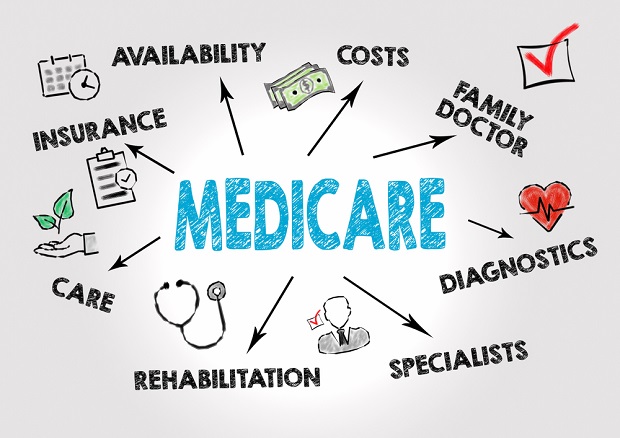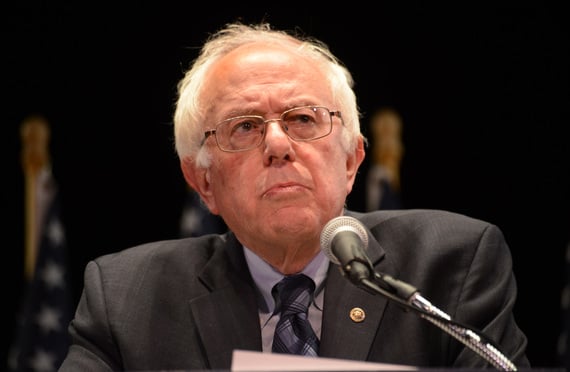 The Trump budget does proposeoutright cuts: Much of its Medicare spending reductions would comefrom reduced payments to health-care providers. (Image:Shutterstock)
The Trump budget does proposeoutright cuts: Much of its Medicare spending reductions would comefrom reduced payments to health-care providers. (Image:Shutterstock)
Democrats called President Donald Trump's budget “dead on arrival” when itlanded in Congress last week, and they are almost surely correct.After all, Congress, not the president, controls actual spendinglevels.
|But that doesn't mean Trump's plan for fiscal year 2020 shouldbe ignored. Instead, it can be seen as a reflection of his 2020campaign priorities. That is why it was startling to see more than$800 billion in proposed cuts to Medicare funding over the next 10 years.
|In the 2016 campaign, Trump repeatedly promised not to cutMedicare. He presented himself as guarding it and Social Securityagainst his Republican primary opponents, and even against HillaryClinton. And this seemed like a campaign promise the presidentintended to keep. A year and a half ago, it was widely reportedthat when his budget director wanted to discuss Medicare cutbacksfor an earlier budget, Trump shut down the conversation before itcould start.
|Related: Medicare, Medicaid better at holding down coststhan private insurance
|So I was surprised — and encouraged — that the president ispushing significant reductions in the program's spending.
|True, his previous budgets have had Medicare cuts. But the 2020plan calls for much larger reductions. And they take place againstthe backdrop of a coming presidential election in which severalDemocrats are running on a platform of significantly expandingMedicare. The contrast to the president's 2016 posture isstriking.
|The cuts aren't as large as they first seem because the proposedspending plan moves two current Medicare components — payments forgraduate medical education and uncompensated care — into otherparts of the budget, while also capping their growth.
|Actual Medicare reductions are between $515 billion and $575billion over 10 years, according to the Committee for a ResponsibleFederal Budget, a nonpartisan research organization devoted tofiscal responsibility. This would slow Medicare's growth to between90 percent and 95 percent over the next decade, according to thegroup's analysis. Under current law, spending on the program isprojected to grow by 111 percent over that period.
|Some of the proposed reforms would be welcome because theyreduce costs by changing the underlying structure and incentives ofMedicare components.
|For example, one proposal would set a common payment for certaintypes of rehabilitative or palliative care following (or at timesin place of) treatment received for an acute medical need at ahospital. Currently, payments for these services depend on whetherthey were performed in a hospital or at an outpatient facility,with hospitals typically getting higher payments. The budgetproposes to eliminate this distinction, and pay based on thetreatment received by the patient.
|Another reform would stop the practice of giving some physicianshigher payments for the same service because a hospital owns theiroffice. Instead, these doctors, working in offices owned by but notlocated in a hospital, would be paid the normal Medicare rate.Similarly, the budget proposes to pay the same rate for certainservices provided at a hospital outpatient department as atphysicians' offices.
|These are not properly understood as benefit cuts (though theywill be portrayed that way by the president's opponents). Instead,they are designed to make the program more efficient to thetaxpayer and to the beneficiaries by removing incentives forhospitals to buy physician practices (which can reduce competitionin health-care markets) and for care to take place in relativelymore expensive hospital settings.
|The Trump budget does propose outright cuts: Much of itsMedicare spending reductions would come from reduced payments tohealth-care providers.
|Given the enormous projected growth in Medicare over the comingdecade and decades, cutting payments to providers is reasonable.But the structural reforms aimed at improving efficiency andincentives are the most laudable. We need more of those types ofchanges.
|A great place to build off the proposals in the budget would bereducing (ideally, eliminating) the subsidy given to currentworkers who have employment-based health insurance. Premiums forthese plans are excluded from income and payroll taxes, which willresult in $3.7 trillion in lost revenue over the next 10 years. Ifthe premiums were taxed, the revenue could be used to finance otherthings, including structural reforms in Medicare.
|While not part of the Medicare program, the exclusion of thesepremiums from taxation encourages people to purchase relativelymore generous coverage, pushing up the overall growth of healthprices and spending.
|There is no shortage of other ideas to change Medicare'sstructure for the better. Premiums could be made higher forbetter-off seniors. Health-care scholars at the American EnterpriseInstitute, where I work, and the Brookings Institution recentlypublished a number of suggestions that should be considered.
|These include increasing incentives for providers to prescribelower-cost, generic drugs, expanding the use of “bundled” payments,in which a fixed payment is made for all care associated with ahealth episode, and placing additional restrictions on privateinsurance plans that supplement Medicare.
|In the meantime, the president's 2020 budget is a step in theright direction, particularly in light of Trump's 2016 campaignrhetoric. Three cheers for slowing the growth of Medicare, and oneand a half cheers for the way his plan goes about doing so. Braceyourself for the 2020 Medicare wars.
|Read more:
- Medicare for All: Where the 2020 presidentialcandidates stand
- Medicaid expansion cheaper than ACAsubsidies
- Medicare buy-in would cut billions in hospitalrevenues
This column does not necessarily reflect the opinion of theeditorial board or Bloomberg LP and its owners.
|Michael R. Strain ([email protected])is a Bloomberg Opinion columnist. He is director of economic policystudies and resident scholar at the American Enterprise Institute.He is the editor of “The U.S. Labor Market: Questions andChallenges for Public Policy.” To contact the editorresponsible for this story: Katy Roberts [email protected].
Complete your profile to continue reading and get FREE access to BenefitsPRO, part of your ALM digital membership.
Your access to unlimited BenefitsPRO content isn’t changing.
Once you are an ALM digital member, you’ll receive:
- Critical BenefitsPRO information including cutting edge post-reform success strategies, access to educational webcasts and videos, resources from industry leaders, and informative Newsletters.
- Exclusive discounts on ALM, BenefitsPRO magazine and BenefitsPRO.com events
- Access to other award-winning ALM websites including ThinkAdvisor.com and Law.com
Already have an account? Sign In
© 2024 ALM Global, LLC, All Rights Reserved. Request academic re-use from www.copyright.com. All other uses, submit a request to [email protected]. For more information visit Asset & Logo Licensing.







